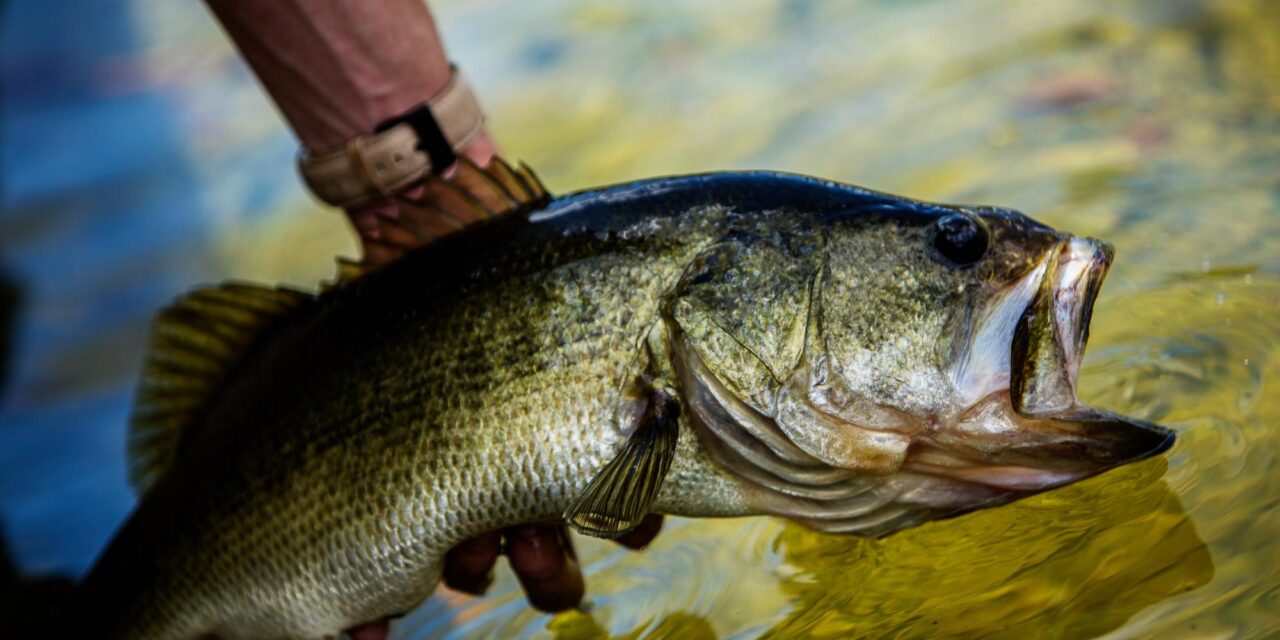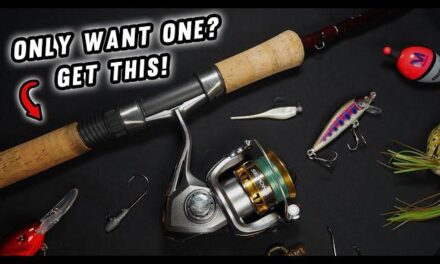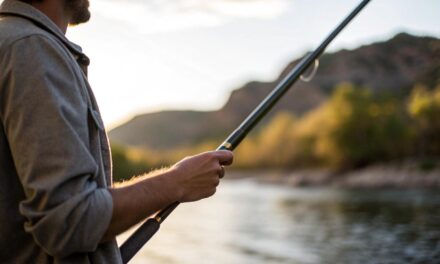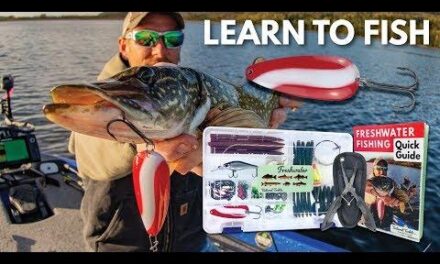Essential Bass Fishing Tips: Techniques to Catch More Bass and Enhance Your Skills
Estimated reading time: 8 minutes
Table of Contents
Key Takeaways
- Understand bass behavior by learning seasonal patterns and habitat preferences to improve your fishing success.
- Use the right gear including rods, reels, and lures suited for bass fishing, and compare these with saltwater gear for versatility.
- Master various techniques like flipping, pitching, and topwater fishing to effectively target bass in different conditions.
- Expand your skills by exploring other fishing styles such as trout fishing, saltwater, and ice fishing to become a well-rounded angler.
Understanding Bass Behavior
To enhance your bass fishing skills, it’s essential to first understand bass behavior and how it varies with the seasons. Bass are usually categorized into three species: Largemouth, Smallmouth, and Spotted bass, each with its distinct habits. Seasonal patterns greatly influence bass behavior, affecting their feeding times, locations, and the techniques you should employ. For a comprehensive understanding of seasonal fishing strategies, check out this detailed guide on seasonal fishing patterns.
Seasonal Patterns and Habitat Preferences
- Spring Spawn: As the water warms in early spring, bass begin their spawning ritual. During this time, males are often found guarding nests in shallower waters. This is a great opportunity for anglers to use techniques like flipping or pitching soft plastics in and around the nesting area. Understanding seasonal patterns like this is key to refining your bass fishing tips. According to Wired2Fish, recognizing where to find bass during spawning can significantly improve your catch rate.
- Summer Feeding: During the summer months, bass will often seek cooler, deeper waters as the temperature rises. Look for them near structures like submerged rocks, fallen trees, or weed beds. Topwater lures can be particularly effective during morning and evening low light conditions. Learning how to locate productive fish during hot months can be further refined by exploring best summer fishing tactics.
- Fall Migration: As temperatures drop in the fall, bass will become increasingly active. They will feed heavily to prepare for the winter months. Use fast-moving baits, like crankbaits, to mimic the activity of shad during this time.
- Winter Lethargy: During the winter, bass become less active and often retreat to deeper waters. To catch them during this season, patience is crucial. Slow and steady retrieves with jigs or soft plastics can yield results.
Understanding these behavioral patterns not only fine-tunes your bass fishing techniques but can also assist in adapting strategies for other species. For instance, if you’ve learned how to approach bass in shallow waters, you can apply this insight when using a trout fishing guide, as trout also exhibit similar habitat preferences depending on the season.
Essential Gear for Bass Fishing
Having the right equipment can be the difference between a successful fishing trip and a day without a catch. Here’s a breakdown of essential gear for bass fishing that can accommodate both beginners and seasoned anglers.
Rods and Reels
Investing in quality fishing rods and reels is crucial:
- Rods: A medium-heavy action rod is versatile enough to cover a range of techniques from flipping to topwater fishing. Look for rods that offer good sensitivity to feel bites effectively. For guidance on selecting the right gear, see this complete freshwater gear guide.
- Reels: Both spinning reels and baitcasting reels have their places in the world of bass fishing. Spinning reels are easier to use for beginners, while baitcasting reels offer better control and accuracy for seasoned fishers.
Key Lures
Selecting the right lures is vital for attracting bass:
- Crankbaits: Ideal for covering large areas quickly. They mimic the movement of prey fish and are especially effective during the summer.
- Soft Plastics: This includes worms, crawfish, and lizards. These lures are great for flipping or pitching around cover where bass are likely to hide.
- Topwater Plugs: These create surface commotion, attracting aggressive strikes, particularly during low-light conditions.
Comparing Freshwater and Saltwater Gear
While bass fishing gear focuses on sensitivity and finesse, saltwater fishing often requires more robust equipment due to larger fish and rougher conditions. If transitioning to saltwater, consider investing in gear that’s corrosion-resistant and capable of handling bigger species.
To help organize your gear selection, use the following checklist:
- Rod: Medium-heavy action
- Reel: Spinning or baitcasting
- Lures: Crankbaits, topwater plugs, soft plastics
- Tackle Box: To store your lures and gear
Equipping yourself with the right tools is one of the most valuable bass fishing tips. Learning to compare your tackle choices with those used in saltwater fishing techniques can also enhance your overall fishing expertise.
Techniques for Catching Bass
Now that you understand bass behavior and have the right equipment, it’s time to master techniques for catching them. Here are some effective methods to consider:
Flipping and Pitching
These two techniques are fantastic for targeting bass hiding in heavy cover. Flipping involves a more precise presentation, allowing the bait to drop quietly into the water, making it less suspicious to the fish. Pitching, on the other hand, allows you to cast further and more accurately.
- Flipping: Use a baitcaster with braided line for better sensitivity.
- Pitching: Hold the rod at 10 o’clock and use your wrist to propel the lure forward softly.
Topwater Fishing
Topwater lures work wonders, especially during the early hours and late in the evening when bass are actively feeding. The sound and action of these lures can create a substantial disturbance on the water, prompting aggressive strikes.
Crankbait Retrieval
When using crankbaits, vary your retrieve speed and incorporate pauses; the sudden stop mimics an injured fish. According to Bass Resource, manipulating your retrieve can yield better results, especially in variable water temperatures.
Comparing with Fly Fishing Techniques
For those familiar with fly fishing for beginners, it’s notable that accuracy and presentation are also core principles in bass fishing. While fly fishing primarily uses artificial flies and lightweight tackle, many concepts overlap, such as the importance of location and technique. Try varying your topwater and crankbait techniques with aspects borrowed from fly fishing—such as precision casting and retrieving—that can lead to further success.
Expanding Your Skills—Other Fishing Types
To become a more well-rounded angler, consider exploring other fishing styles that can complement your bass fishing skills. Here are a few styles worth considering:
Trout Fishing
Trout fishing requires different techniques like stealth and reading water currents. The skills you develop targeting bass—like ensuring an enticing presentation—can significantly assist in presenting lures for trout. Want to refine your skills? Our trout fishing guide offers expert insights.
Saltwater Fishing
Venturing into saltwater fishing techniques can be exciting and rewarding. Transitioning from freshwater to saltwater requires an understanding of tidal patterns and different bait setups due to the robust nature of saltwater fish. The angling techniques learned while bass fishing, especially regarding equipment handling and bait selection, will prove beneficial.
Ice Fishing
Ice fishing tips can enhance your skills even further. The conditions may vary drastically from summer bass fishing. It teaches patience, as fish can be less active in cold water, relying on effective lure presentation. Skills such as accurately locating fish and optimizing your lure’s visual appeal can make a difference. For winter-specific strategies, check out ice fishing tips.
By exploring these diverse strategies, from insights in a trout fishing guide to mastering saltwater fishing techniques and adopting practical ice fishing tips, you’ll become a more rounded and successful angler.
Conclusion
To wrap up our exploration of essential bass fishing tips, let’s recap the key points:
- Understand Bass Behavior: Familiarize yourself with seasonal patterns and habitat preferences to enhance your success rates.
- Pick Essential Gear: Invest in the right rods, reels, and lures that align with your fishing style and conditions.
- Master Various Techniques: Whether it’s flipping, pitching, or topwater fishing, employing the right methods can significantly increase your catch rate.
- Expand Your Skills: Don’t hesitate to explore other fishing styles such as trout fishing, saltwater, or ice fishing to further enhance your overall angling skills.
So, go ahead! Take these bass fishing tips, experiment with different approaches, and continue learning about other fishing techniques. The world of angling is vast, and each experience brings the opportunity for growth. Happy fishing!
For those who want to dive deeper into particular areas or need assistance with gear or techniques, feel free to explore expert guides or consult local communities. Understanding and enjoying fishing can always lead to a fulfilling experience, whether you’re on a beautiful lake, a rushing river, or frozen waters!





